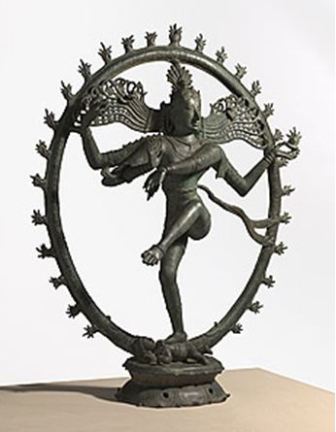By Robyn Sloggett, University of Melbourne
THE announcement today that the Australian government will return the US$5 million Chola-era Dancing Shiva to India, after months of scandal focused on the National Gallery of Australia (NGA) and art dealer Subhash Kapoor, appears as a welcome shift in attitudes to the illicit trade of antiquities in this country.
In reality, as signatory to both the 1995 UNIDROIT Convention on Stolen or Illegally Exported Cultural Objects and the UNESCO Convention on the Means of Prohibiting and Preventing the Illicit Import, Export and Transfer of Ownership of Cultural Property 1970, Australia has very little option.
An object purchased in 2008 by the NGA should clearly have been more thoroughly checked. The more worrying aspect of the announcement is that the Australian Government was put in this position in the first place.
The evidence that the statue was in the temple in 1974 clearly marks this as an illicit trade under the 1970 UNESCO Convention.
So the question remains: where are the practical alignments of Australia’s responsibility under the Convention with the acquisition practices, codes and policies of (at least some of) Australia’s major public collecting institutions?
Clearly as a result of this case, the answer is that, unfortunately, there is very little alignment.
The art and antiquities market is notorious for taking the word of the seller at face value. In the 2007 art fraud trial of Melbourne couple Pamela and Ivan Liberto, Justice Roland Williams expressed astonishment that a number of major auction houses used the provenance provided by the Libertos, who were passing off their fraudulent handiwork as the work of renowned Indigenous artist Rover Thomas, as evidence of the history of the work.
This practice of “seeing and not seeing”, which enables works that otherwise would not enter the market free passage into the sales rooms, comes at a substantial cost.
Australia has also been a victim of this kind of illicit activity. In October 1996, dinosaur footprints were stolen from a rocky outcrop on beach near Broome in Western Australia. Western Australian Museum palaeontologist John Long subsequently wrote a book The Dinosaur Dealers that described in detail the links between criminal activity and the sale of fossils in the open market.
Paleontologists reported that material from ongoing excavations was sometimes stolen overnight, or, as is more common, between digging seasons where excavations sites close down for particular periods. Looting compromises their scientific integrity and often results in the destruction of material with high scientific value but low monetary value.
There is no doubt that the illicit trade in art and antiquities corrupts the market and comprises scholarship. It does so much more, however, as the 2014 Four Corners report on the Dancing Shiva recorded. T. Krishnamoorthy, trustee of the temple in the remote Indian village of Sri Puranthan, that had been for hundreds of years home to this icon recounted:
As the statues were missing, as I was trustee, tears came from my eyes as I thought that the statues went missing during my tenure. There were many people standing around. They all were very sad that the statues had gone from the village.
This is the real pattern of the illicit trade: theft from a small, disadvantaged community, that is remote, politically powerless, and perhaps part of a recent conflict; Afghanistan, Iraq, Egypt and Syria, present only recent examples. It is also well-documented that the trade in illicit artworks and antiquities are also linked to the trade in arms and human trafficking.
The illicit trade in art and antiquities removes objects from access and destroys or compromises their meaning. The impact is that critical documents and objects are lost, impeding the ability to produce knowledge that is based on properly verified and verifiable data.
Illicit trade removes or alters the meaning of material that is used for research, reduces the research ability of individuals, and impacts on the kind of new knowledge that can be generated.
Concerns about looting of Egyptian museums during the civil unrest, the destruction of Afghanistan’s heritage during the rule of the Taliban, and current sacking of sites in Syria, continue to receive regular press in this country.
Moral outrage is expressed about the loss of significant material, and anger that this destruction is continuing. The hint of complicity of Australian institutions in such a trade should, therefore, be a matter of national shame.
A more convincing response from the Australian government would be a national audit of the provenance documentation of works purchased after Australia signed the 1970 and 1995 conventions.
The National Gallery of Australia claimed to have undertaken due diligence in this regard. Acquisition policies, particularly where acquisitions rely on public money, or on donors, should include a rigorous process for assessing provenance.
What better time than now to put them to the test?
Pitch an idea to the Arts + Culture editor.

Robyn Sloggett does not work for, consult to, own shares in or receive funding from any company or organisation that would benefit from this article, and has no relevant affiliations.
This article was originally published on The Conversation.
Read the original article.
The post The Dancing Shiva fiasco should shift attitudes in Australia appeared first on Canberra CityNews.
